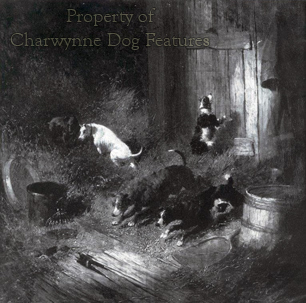802 PERPETUATING THE PATTERDALE
PERPETUATING THE PATTERDALE
by David Hancock
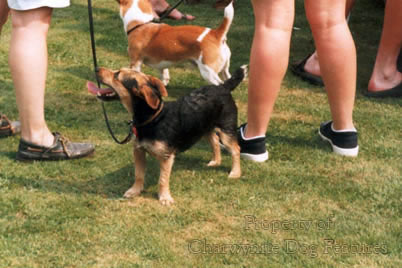 Over the last half-century I have come across black or solid red working terriers and been thoroughly confused by their owners' claims for them. Some were claimed to be Fell Terriers, some posed as Buck, Bray or Nuttall dogs, one as an 'Incliffe Black', another as a 'Stacey Black' and others as Patterdale Terriers. And the latter is registered as a breed with the United Kennel Club of America. But writing in Shooting Times in May, 1980, terrier expert George Newcombe stated that he had never been able to prove their provenance. Brian Plummer in his The Working Terrier of 1978 considered the Fell and the Patterdale as being different. Is breed status necessary for such terriers?
Over the last half-century I have come across black or solid red working terriers and been thoroughly confused by their owners' claims for them. Some were claimed to be Fell Terriers, some posed as Buck, Bray or Nuttall dogs, one as an 'Incliffe Black', another as a 'Stacey Black' and others as Patterdale Terriers. And the latter is registered as a breed with the United Kennel Club of America. But writing in Shooting Times in May, 1980, terrier expert George Newcombe stated that he had never been able to prove their provenance. Brian Plummer in his The Working Terrier of 1978 considered the Fell and the Patterdale as being different. Is breed status necessary for such terriers? 
Nowadays, perhaps because of the need to register dogs being shown in the ring, we relate to breeds far more than our more distant sporting ancestors ever did; breed purity was never a requirement for a working terrier, genes were not the judgement, performance was all. The types chosen by terrier-men were those with a working provenance, judged not on genes, coat-colour or coat-texture, height at shoulder or shape of skull and nearly always from mixed ancestry. As Richard Clapham wrote in his Foxes, Foxhounds and Fox-Hunting, (Heath Cranton Ltd), of eighty years ago:
“Some of the best all-round working terriers today are to be found with the fell foxhound packs in the Lake District. They are practically all cross-bred, with Bedlington, Border, etc., blood in them…in the land of the dales and the mountains the only criterion of a terrier is working ability, first, last and all the time.”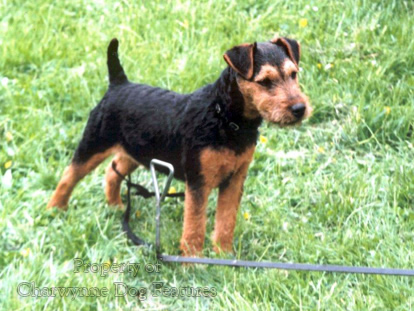
Similarly, no claim was made on names for types favoured in different areas. As terrier expert Mossop Nelson wrote in WC Skelton’s Reminiscences of Joe Bowman and the Ullswater Foxhounds, published in 1921 by Atkinson and Pollitt:
“I have a great feeling about keeping to the old breed of what has sometimes been called the Patterdale terrier: brown or blue in colour with a hard wiry coat, a narrow front, a strong jaw, not snipey like the present show fox terrier, but at the same time not too bullet-like to show a suspicion of bulldog cross – a short strong back, and legs which will help him over rough ground and enable him to work his way underground.”
It is noteworthy that the writer was stating what the terrier required to do his job best, rather than what cosmetic points the breeder or owner wished to bestow on it. 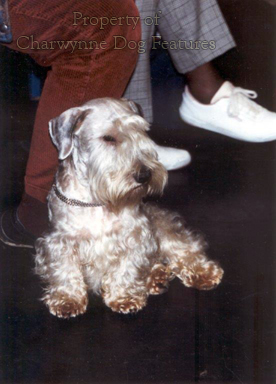
A correspondent to The Field magazine in 1886 wrote: “The dormant spirit of an old fell hunter has recently been keenly awakened at the mention of the Elterwater terriers, which breed, I am informed, is nearly extinct…The Elterwater terriers had plenty of go in them, and no shaking or trembling at your heels, in frost and snow, like so many of the terriers of the present day.” Elterwater is near Rydal, just north of Lake Windermere, Patterdale is some ten miles south of Rydal, at the southern end of Ullswater. Eighty years ago, the Eskdale and Ennerdale Hunt was using six couples of working Fox Terriers, whilst the Coniston Hunt was using the Fell type. The Border Terrier, also called the Reedwater Terrier, the Cheviot Terrier, the Ullswater Terrier (even Joe Bowman’s terrier) and the Robson Terrier (after the Master of the Border Hunt) was favoured by the North Tyne Foxhounds. As always with terriers, their devotees have the firmest of views about the best type for the job in their hunt country. Type came with territory; breeding stock came not from studying pedigrees of rosetted winners but from proven performers in the field.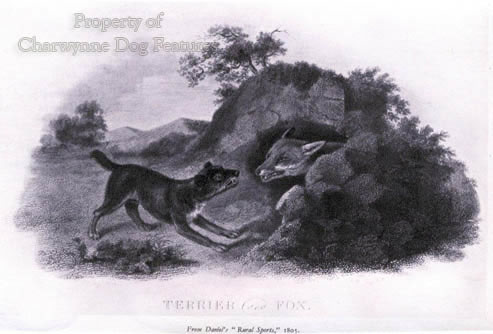
The emergence of the Kromfohrlander, now recognised on the Continent as a pure-breed but originating in a mis-alliance involving a Fox Terrier and the development of the Cesky Terrier, from the planned matings of Sealyham and Scottish Terriers, and now recognised here as pure-bred, shows that new terrier breeds can be established. The move of the Jack Russell to the show rings as the Parson Russell Terrier indicates the ease in which such a transformation can be achieved. Other emergent terrier breeds like the Sporting Lucas and the Plummer might one day go down that route. These have all become distinctive breeds - could the Patterdale and Fell Terriers go down this route too? What would make them a breed rather than a type of working terrier once favoured in a particular valley? The only immediate difference for me between a Norfolk and a Norwich Terrier is in the ear-carriage, is this enough to distinguish a breed as such?
Once a breed has been recognised the gene pool becomes restricted and if KC-recognition is obtained the gene pool dominates every mating. Is that desirable in working terriers? The latter usually developed to suit the country they hunted; is uniformity of benefit to men who work their dogs in different parts of the country? Is it wise to distinguish a breed by coat-colour alone? Black has many dilutions and any restriction on a gene pool, unrelated to performance, is highly questionable. If the Patterdale is to be perpetuated, is this best achieved by becoming a recognised or even a registered breed?
